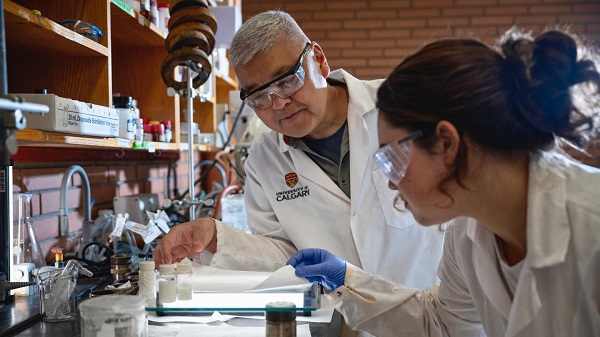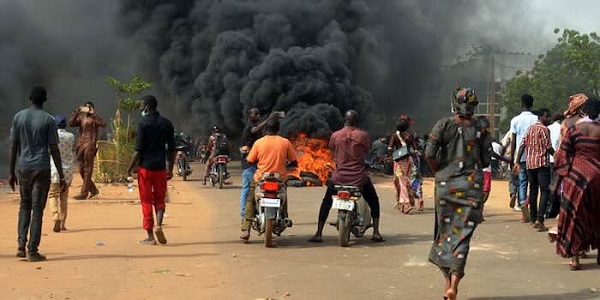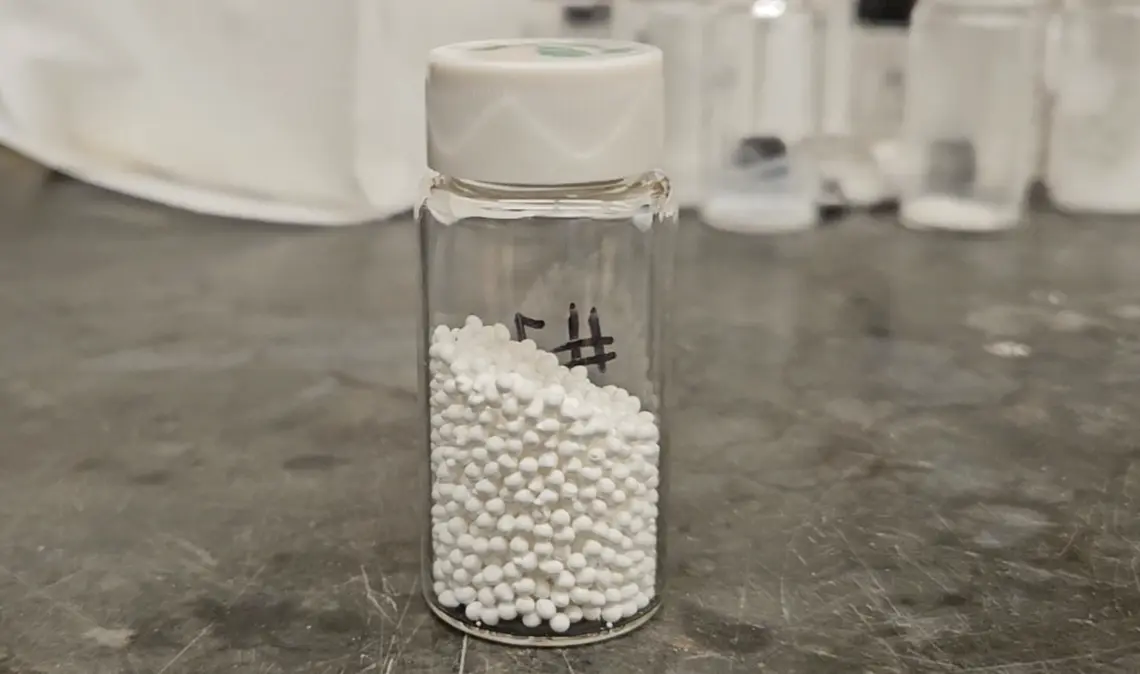Alberta
LISTEN: My date with self-isolation amid the Covid 19 scare – J’Lyn Nye Interview

I was happy to join J’Lyn Nye today on 630 CHED to discuss this. Here is a link to the interview.
It’s funny how these things go. I don’t buy lottery tickets so it’s only fitting that I would be one of the 4.5 million Albertans who may have come into contact with one of Alberta’s now 14 confirmed cases of Covid 19 (Coronavirus Disease). You can do the math if you’re an oddsmaker, but the odds are improving that you too will come into contact with this virus.
It started with a phone call late yesterday afternoon (March 9th) from a nurse in the contagious disease unit at AHS. She informed me that a person who had tested positive for the virus had been at a place of business in Leduc at the same time I had been there for an appointment.
After asking a number of questions about how I was feeling, she told me that they’d like me to “self-isolate” for 14 days. During that time, I should take my temperature twice a day and if I develop any symptoms, to call and they’d arrange for a test. There really is no treatment at this point as a vaccine is yet to be developed and will likely be another 12-18 months away from widespread use.
So here I sit. Do I self-isolate? Do I go about my business? I’m a healthy guy. I’ve only had the flu once in my lifetime that I can remember, so what are the chances that I might test positive for this? Again, I’m not an oddsmaker, and certainly not a doctor. In fact, it’s not like the flu at all so that’s a useless comparison. The chances are probably slim. So I look at my calendar. Reality is that I’m lucky. I operate a digital media platform and literally 100% of my work can be done online if needed. I work from home 80% of the time, leaving the house for various business appointments and social events. Luckily my calendar is light with nothing that can’t be moved or dealt with online.
There is one niggly thing though. A recording session this coming Sunday with a band I sometimes play guitar with in Central Alberta. By Sunday, I should be virtually good to go, that being day 12 after my potential contact. It took a lot of schedule bashing to pull everyone together to do this session. Maybe I should just risk it and not tell anyone. And then I think about that … none of my bandmates are getting any younger, in fact, if I’m facing reality, we’re probably all in that age sweet spot where we’re most-susceptible.
Ok, decision made. Postpone the session. Schedule is now clear except for a couple of sundry tasks that can be accomplished with limited help from some friends.
But … then I think about if I worked at a job where I don’t get paid unless I show up to work. Maybe I’m a contractor. Maybe I have a family and am the sole income earner, or I’m a single parent working two part time jobs. I’m not sure I would make the same decision. I mean, seriously, I feel fine. Not even a sniffle. Would I stay home? Or go make some money to pay my monthend bills? I’m happy I don’t have to make that decision.
“… Another thing I’ve thought quite a bit about is toilet paper…”
I’ve now had 18 hours to process all of this and think it through. I must admit, I’ve never really thought that much about how a disease spreads, other than notionally knowing it happens through various forms of contact, and I think is more prone to spread in certain environments; heavily populated, warm, humid conditions, etc. A scientist I am not.
My date with self-isolation has given me a very real opportunity to reflect on my own travels and interactions since having potentially being exposed to the virus eight days ago. With this newfound time in my schedule, I’ve had a chance to think this through. Since yesterday afternoon, I’ve taken myself out of circulation. I have eliminated my risk to others. With luck I won’t test positive, and everyone in my circle will be spared from self-isolation. I will pull out a guitar and work on the material for the session we postponed. Overall, I’m starting to feel pretty good about my decision.
“…I wonder, can our system possibly get on top of this? It feels like a hopeless task, yet we have to try, right?…”
But what if, just what if, I become Positive Confirmation #8 in the province? Suddenly, everyone I’ve been around since March 3rd becomes of interest. Is Arnie at risk? I attended the Power of Success show last Thursday in Edmonton with Arnold Schwarzenegger and Friends. Lucky for them I couldn’t afford the Platinum ticket that would have given me the opportunity shake Arnie’s hand and get my picture taken with the man himself. I’d certainly have been within 2 meters, and I know we would have had a proper and firm handshake.
“…There will no doubt be businesses that close as a result of this- some for good…”
Oh. Something else … the long-term care home I where I visited my Dad and his wife this past Sunday? That could get messy, considering I also spent time with his doctor, one of the few in the area.
Or the auto repair shop I limped my sick car to yesterday morning after taking out both rims on the right side Sunday when I tangled with one of the ridiculously large and dangerous potholes at 110 kph on Highway 43. (That’s a whole other rant!)
The list goes on. As I think of the permutations and potential for chaos, it’s sobering. How quickly this can spread here is yet to be seen. It doesn’t spread through the air like measles, but it does spread through contact, or droplets generated by a sneeze or cough, and can live on surfaces we touch. Washing hands and cleaning surfaces is critical to helping stop the spread, and that’s just basic common sense anyway.
“However, it can spread person to person by larger droplets, like from a cough or sneeze, or by touching contaminated objects, then touching your eyes, nose or mouth,” says Dr. Deena Hinshaw, Alberta’s chief medical officer of health.
I wonder, can our system possibly get on top of this? It feels like a hopeless task, yet we have to try, right? Maybe geting on top of it isn’t possible. But can we slow the spread with a precaution like I’m being asked to take? Yes we can. But what else has to happen if we’re to make the mitigation effort as effective as possible?
There will no doubt be businesses that close as a result of this- some for good. Think about it. If I go for a coffee everyday at my favourite coffee shop, but because my employer has asked us all to work from home, that coffee shop owner is going to miss out on my $3 bucks a day. And let’s say that happens for 2 weeks. That’s ten cups of coffee, or $30 dollars. I’m not going to go in on the first day back and buy ten cups of coffee. No, I’ll buy one. That money is lost. Multiply that by 100 customers a day and the numbers can add up to a point where many small businesses can’t survive.
There needs to be programs to help them recover. Maybe there are already. What about for the wage earner who has to take time off work to self isolate and make the community safer for everyone else. Is there a program to help them reover their lost wages? How long will that take to put money back in their wallets should they make the sacrifice for the safety of the community? If we’re serious about mitigation, we will need to really think about how to deal with the downstream consequences.
This isn’t survival of the fittest. We need those employers and their employees to get through this and be there when this passes, or we’ll be in even worse shape.
Another thing I’ve thought quite a bit about is toilet paper.
Although this is a new virus and research is only starting to be evaluated, it appears to affect respiratory function more so than gastronomic function, though again, it’s pretty early to know for sure. But best I can tell, there is no way that I need to have a year’s supply of toilet paper on hand. I can see having more than normal, just in case things get out of hand. But to be hoarding it for some weird survivalistic reason, especially against a backdrop of short-term supply shortages exacerbated by recent rail blockages seems … well, just completely irrational to me. Settle down, there’s more coming! And hey, if you’re sick enough to go through that much toilet paper, there may be even more wrong with you and you’ll probably be in a hospital. Show a little kindness for the butts of your neighbours. Like that old joke “…Dick’s a hoarder. Don’t be a Dick…”
Seriously, take a moment and give this a bit of thought. This can change pretty fast, like it did for me. A phone call. And then you don’t go out again for up to 14 days. So think in terms of a 3 week supply of things you’ll need. If you’re alone and have nobody to help you, then you’ll need to be even more diligent in planning.
I’ll let you know how it goes. Hopefully I’ll see you in a couple of weeks!
Here is a link with helpful tips that will help you make an appropriate plan.
From the Government of Canada:
If COVID-19 becomes common in your community, you will want to have thought about how to change your behaviours and routines to reduce the risk of infection.
Your plan should include how you can change your regular habits to reduce your exposure to crowded places. For example, you may:
- do your grocery shopping at off-peak hours
- commute by public transit outside of the busy rush hour
- opt to exercise outdoors instead of in an indoor fitness class
Your plan should also include what you will do if you become sick. If you are a caregiver of children or other dependents, you will want to have thought ahead to engage backup caregivers.
You should also think about what you will do if a member of your family becomes sick and needs care. Talk to your employer about working from home if you are needed to care for a family member at home. If you, yourself, become ill, stay home until you are no longer showing symptoms. Employers should not require a sick leave note as that will put added pressure on limited health care services.
Your plan should include shopping for supplies that you should have on hand at all times. This will ensure you do not need to leave your home while you are sick or busy caring for an ill family member.
Your plan should build on the kits you have prepared for other potential emergencies. For more information on how to prepare yourself and your family in the event of an emergency, please visit getprepared.ca.
Read more on Todayville Edmonton.
This article was originally published on March 10, 2020.
Alberta
Nobel Prize nods to Alberta innovation in carbon capture

From the Canadian Energy Centre
‘We are excited to bring this made-in-Canada innovation to the world’
To the naked eye, it looks about as exciting as baking soda or table salt.
But to the scientists in the University of Calgary chemistry lab who have spent more than a decade working on it, this white powder is nothing short of amazing.
That’s because the material they invented is garnering global attention as a new solution to help address climate change.
Known as Calgary Framework-20 (CALF-20 for short), it has “an exceptional capacity to absorb carbon dioxide” and was recognized in connection with the 2025 Nobel Prize in Chemistry.
“It’s basically a molecular sponge that can adsorb CO2 very efficiently,” said Dr. George Shimizu, a UCalgary chemistry professor who leads the research group that first developed CALF-20 in 2013.
The team has been refining its effectiveness ever since.
“CALF-20 is a very exciting compound to work on because it has been a great example of translating basic science into something that works to solve a problem in the real world,” Shimizu said.
Advancing CCS
Carbon capture and storage (CCS) is not a new science in Alberta. Since 2015, operating projects in the province have removed 15 million tonnes of CO2 that would have otherwise been emitted to the atmosphere.
Alberta has nearly 60 proposed facilities for new CCS networks including the Pathways oil sands project, according to the Regina-based International CCS Knowledge Centre.
This year’s Nobel Prize in Chemistry went to three of Shimizu’s colleagues in Japan, Australia and the United States, for developing the earliest versions of materials like CALF-20 between 1989 and 2003.
Custom-built molecules
CALF-20 is in a class called metal-organic frameworks (MOFs) — custom-built molecules that are particularly good at capturing and storing specific substances.
MOFs are leading to new technologies for harvesting water from air in the desert, storing toxic gases, and capturing CO2 from industrial exhaust or directly from the atmosphere.
CALF-20 is one of the few MOF compounds that has advanced to commercial use.
“There has been so much discussion about all the possible uses of MOFs, but there has been a lot of hype versus reality, and CALF-20 is the first to be proven stable and effective enough to be used at an industrial scale,” Shimizu said.
It has been licensed to companies capturing carbon across a range of industries, with the raw material now being produced by the tonne by chemical giant BASF.
Carbon capture filter gigafactory
Svante Inc. has demonstrated its CALF-20-based carbon capture system at a cement plant in British Columbia.
The company recently opened a “gigafactory” in Burnaby equipped to manufacture enough carbon capture and removal filters for up to 10 million tonnes of CO2 annually, equivalent to the emissions of more than 2.3 million cars.
The filters are designed to trap CO2 directly from industrial emissions and the atmosphere, the company says.
Svante chief operating officer Richard Laliberté called the Nobel committee’s recognition “a profound validation” for the entire field of carbon capture and removal.
CALF-20 expansion
Meanwhile, one of Shimizu’s former PhD students helped launch a spinoff company, Existent Sorbents, to further expand the applications of CALF-20.
Existent is working with oil sands producers, a major steel factory and a U.S.-based firm capturing emissions from other point sources, said CEO Adrien Côté.
“The first users of CALF-20 are leaders who took the risk of introducing new technology to industries that are shrewd about their top and bottom lines,” Côté said.
“It has been a long journey, but we are at the point where CALF-20 has proven to be resilient and able to survive in harsh real-world conditions, and we are excited to bring this made-in-Canada innovation to the world.”
Alberta
Thousands of Albertans march to demand independence from Canada

From LifeSiteNews
Thousands of Albertans marched upon the province’s capital of Edmonton this past Saturday in the “I Am Alberta Rally,” calling for the province to immediately secede from Canada in light of increasing frustration with the Liberal federal government.
The rally saw an estimated 20,000 to 30,000 people march on the steps of the Alberta legislative building, demanding that a referendum be held at once to allow Alberta to leave Canada.
“We can’t delay. We can’t slow down,” well-known freedom lawyer Keith Wilson said at the rally as he spoke to the crowd.
“This is our moment. This is our future. For our families, for our children, for Alberta. Alberta will be free.”
The group behind the rally, the Alberta Prosperity Project (APP), bills itself as a sovereignty advocacy group. As reported by LifeSiteNews earlier this year, the APP wants to put Alberta independence to a question to the people via a referendum.
The rally also comes after certain members affiliated with the APP such as Jeffrey Rath and Dr. Dennis Modry earlier the month met in Washington, D.C. with cabinet-level U.S. politicians to discuss Alberta’s potential independence from Canada.
U.S. President Donald Trump has routinely suggested that Canada become an American state in recent months, often making such statements while talking about or implementing trade tariffs on Canadian goods.
The APP on July 4 applied for a citizen-led petition presented to Elections Alberta that asks, “Do you agree that the Province of Alberta shall become a sovereign country and cease to be a province in Canada?”
The group is hoping to have the referendum on the ballot as early as next year and has accused the Liberal federal government of encroaching on Alberta’s ability to manage its own affairs.”
The group says an independent Alberta would allow it to “keep our resources, grow our economy, and reinvest in Alberta families, businesses and infrastructure.”
As it stands now, the referendum question has been referred to the courts to see whether or not it can proceed.
Alberta Conservative Premier Danielle Smith does not support a fully independent Alberta. However, she does advocate for the province to have more autonomy from Ottawa.
As reported by LifeSiteNews, Smith said her conservative government will allow but not support a citizen-led referendum on independence.
Despite not advocating for an outright separate Alberta, Smith’s government has not stood still when it comes to increasing provincial autonomy.
Smith’s United Conservative government earlier this year passed Bill 54, which sets the groundwork for possible independence referendums by making such votes easier to trigger. The bill lowers the signature threshold from 600,000 to 177,000.
As reported by LifeSiteNews last week, Smith’s government introduced a new law to protect “constitutional rights” that would allow it to essentially ignore International Agreements, including those by the World Health Organization (WHO), signed by the federal Liberal government.
The calls for independence have grown since Liberal leader Mark Carney defeated Conservative rival Pierre Poilievre.
Carney, like former Prime Minister Justin Trudeau before him, said he is opposed to new pipeline projects that would allow Alberta oil and gas to be unleashed. Also, his green agenda, like Trudeau’s, is at odds with Alberta’s main economic driver, its oil and gas industry.
-

 International2 days ago
International2 days agoBiden’s Autopen Orders declared “null and void”
-

 Business2 days ago
Business2 days agoCanada’s combative trade tactics are backfiring
-

 Internet1 day ago
Internet1 day agoMusk launches Grokipedia to break Wikipedia’s information monopoly
-

 Business23 hours ago
Business23 hours agoCanada heading into economic turbulence: The USMCA is finished and Canadian elbows may have started the real fight
-

 Canada Free Press2 days ago
Canada Free Press2 days agoThe real genocide is not taking place in Gaza, but in Nigeria
-

 Business2 days ago
Business2 days agoCanada has given $109 million to Communist China for ‘sustainable development’ since 2015
-

 Business1 day ago
Business1 day agoBill Gates walks away from the climate cult
-

 MAiD2 days ago
MAiD2 days agoStudy promotes liver transplants from Canadian euthanasia victims










